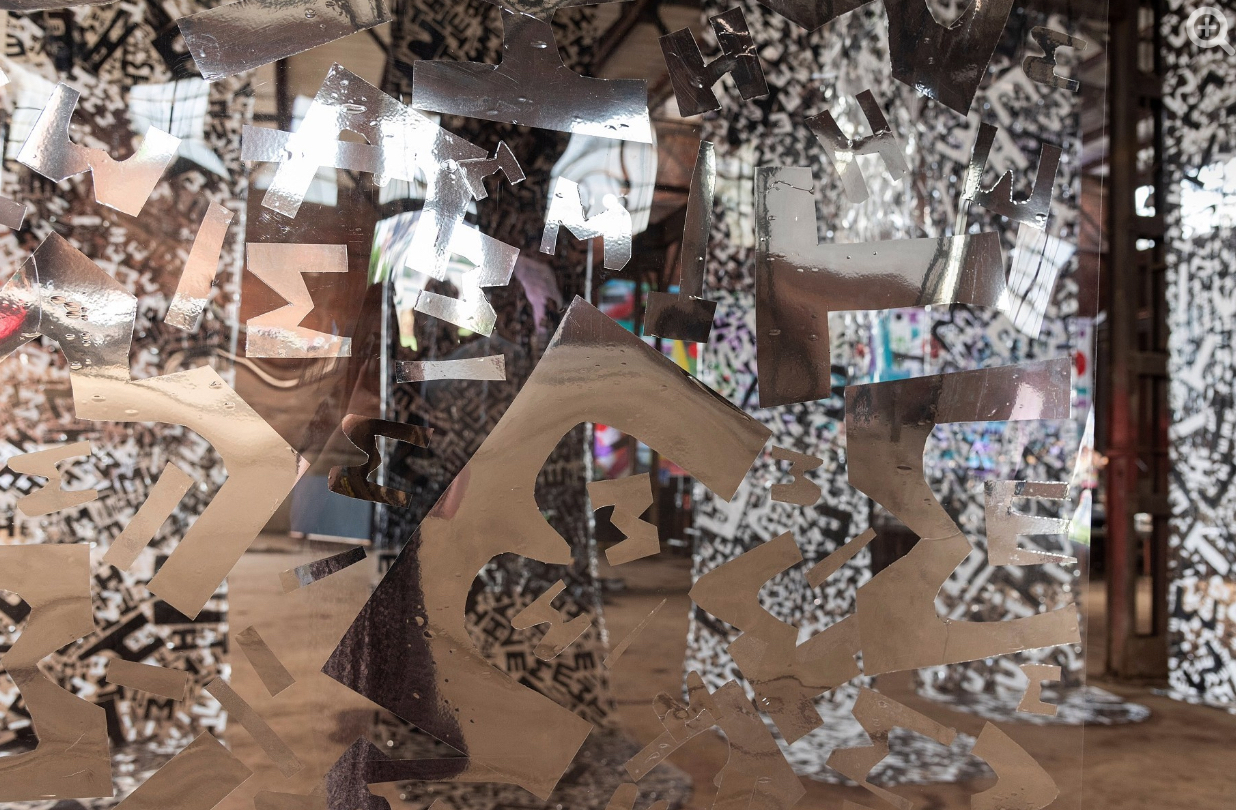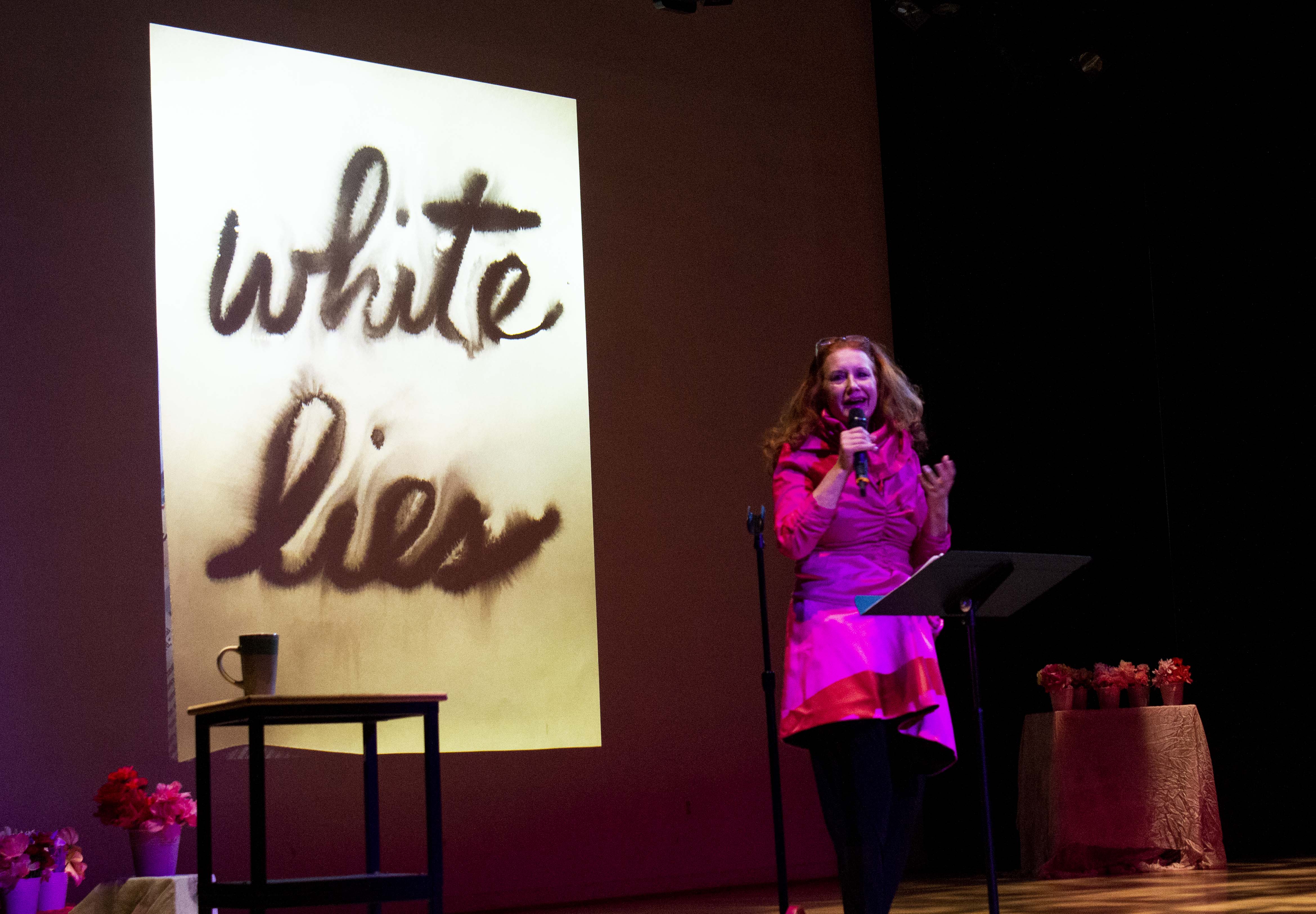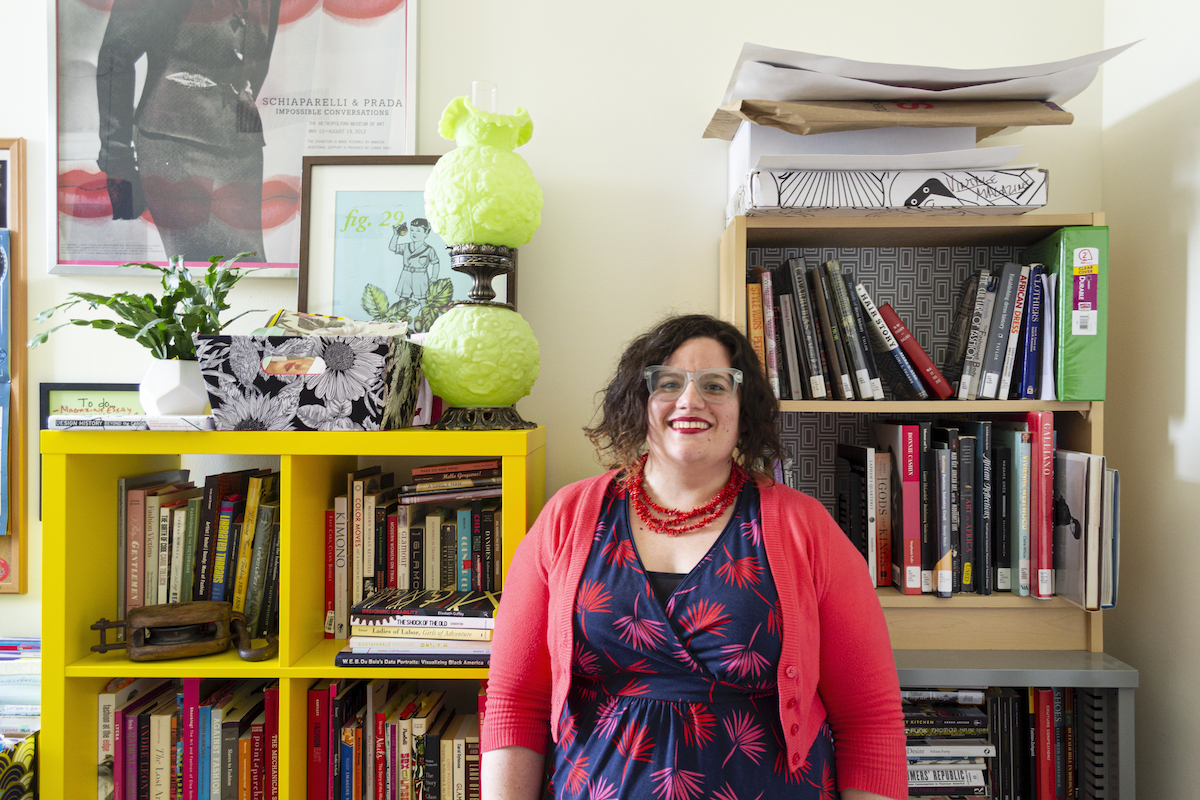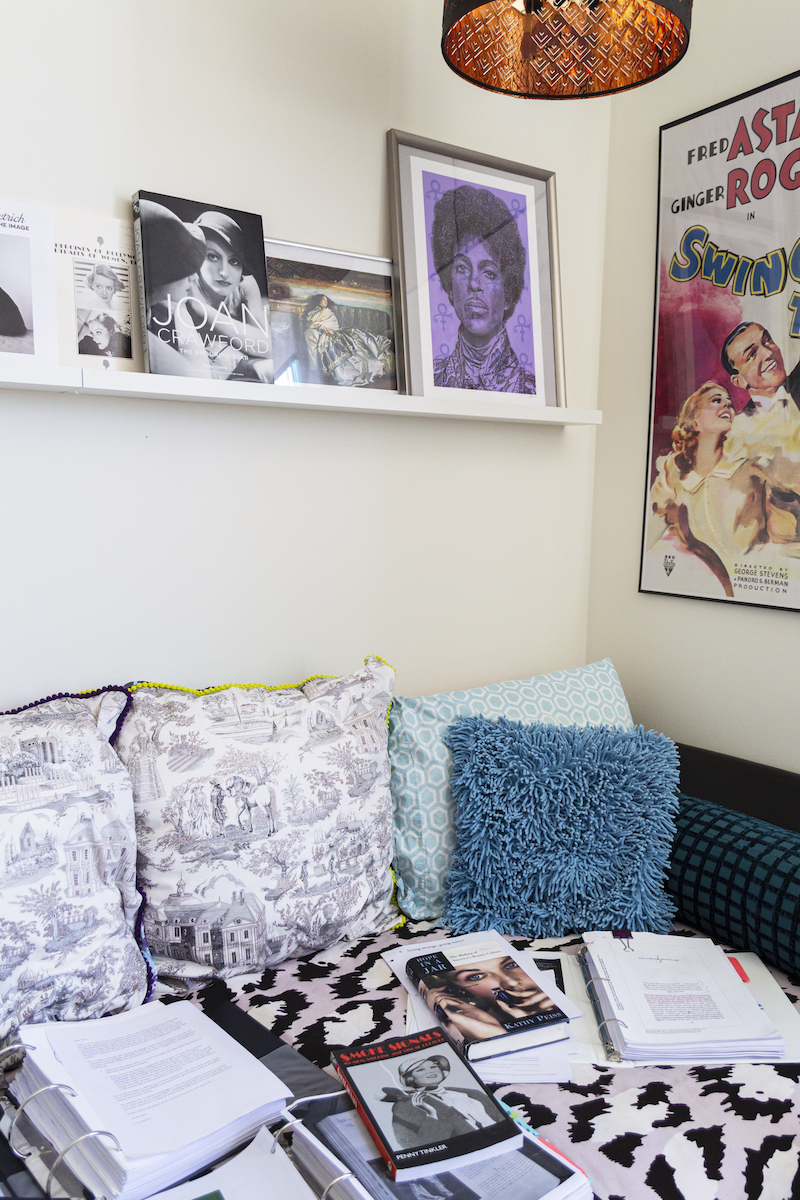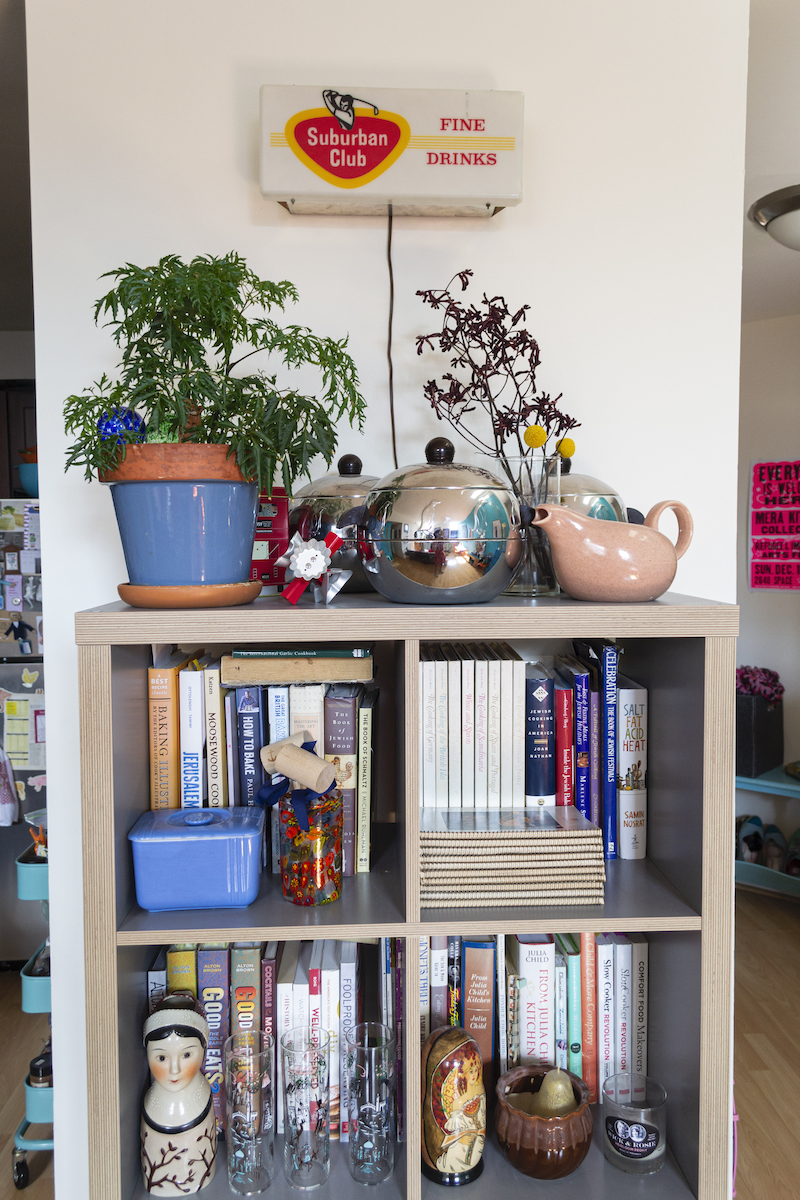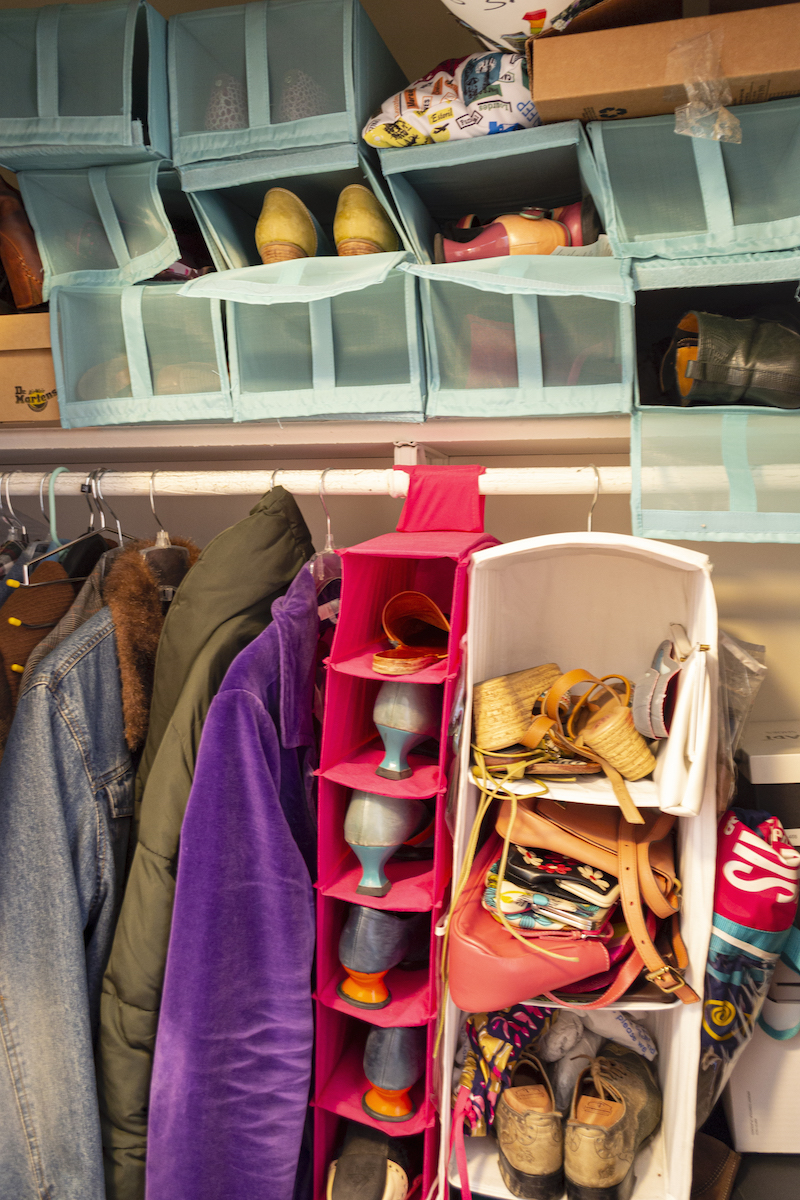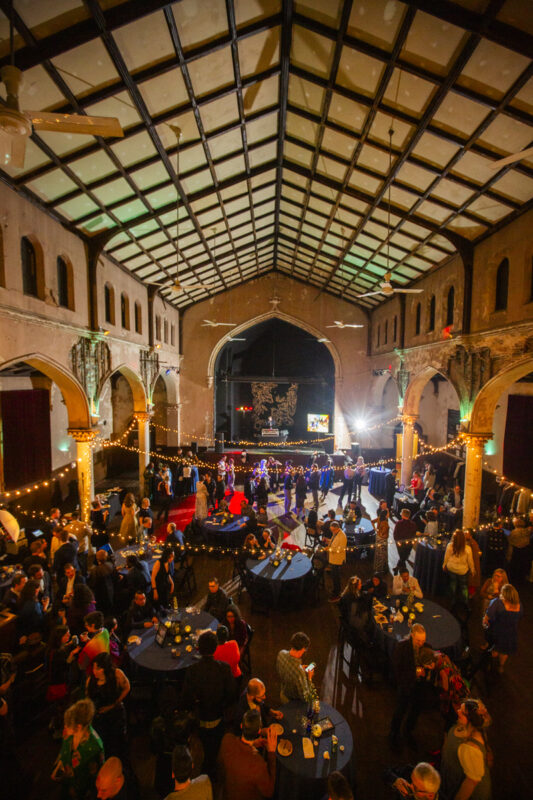Victoria Pass recommends you stop buying cheap shoes. The MICA professor of visual culture has built her own impressive shoe collection over the last 15 years, buying only a pair or two a year of true quality pieces, rotating what she wears and re-soling them when they wear out.
Pass considers herself “a research evangelist.” Her enthusiasm for turning fact-finding into academic writing about design and fashion history is infectious to her students. A native to the Baltimore area, Pass moved away for college at Boston University, earned her masters at the Art Institute of Chicago, and got her PhD at the University of Rochester. She taught at Salisbury University before returning home to Baltimore to teach at MICA, where she has found the student body to be incredibly engaged and excited about the fashion and design content of her courses.
“That’s the best part of teaching at MICA, learning from my students and seeing them grow in their line of questioning,” she explains. In guiding her classes, Pass isn’t interested in introducing a hierarchy in design, instead valuing accessibility and letting students pursue what is most interesting to them, drawing no distinction in the academic value of the so-called “high” or “low” aspects of the designed world.
Pass likes nothing more than spending time asking and answering problems she crafts for herself, delving deep into design history, tracing, say, a particular pattern from the Paris runways of today back through several cultural iterations and appropriations to its actual origin, which is often surprising. In her light-filled apartment in Baltimore’s Mount Vernon neighborhood, Pass and I talked about the joys of spending an afternoon combing through mid-century advertising archives, why cupcakes impress people, and what we’re really talking about when we throw around the umbrella term “cultural appropriation.”

SUBJECT: Victoria Pass, 38
WEARING: “My dress is from Boden and the cardigan is from ModCloth. The coral necklace was a gift from my dad from a business trip to Hawaii. My mom gave me the ring, which is a silver turtle with coral and turquoise, she bought it at the Grand Canyon in the mid-1970s. Just because it’s interesting, my lipstick is a shade called ‘Blood Red’ from a company in Burbank called Bésame Cosmetics. The woman who runs it has an amazing collection of vintage cosmetics and tries to replicate them, so ‘Blood Red’ is based on an original color from 1922!”
PLACE: Mount Vernon, Baltimore
Suzy Kopf: What was the worst career or life advice you’ve ever received? What is the best?
Victoria Pass: I think the worst advice I ever received was that I should get an MBA after I got my PhD because I couldn’t find a full-time teaching job and spent two years on the market. It was said out of love by someone who was trying to be helpful, but it was kind of the worst thing I could have heard at that moment, and it was totally nonsensical.
As far as good advice, I’m going to go cheesy with this one. One of my friends has had a poster since college with Samuel Beckett’s famous quotation from Worstward Ho, “Try again. Fail again. Fail better.” I know it seems trite, but I really don’t think it is. It’s not such an easy blanket statement, only some of us have the privilege to fail, and only in certain things, but I still think it’s good advice. I think it’s the element of trying that is important, trying new things, trying something that scares you (but that you know will push you forward in your life), or trying to do something hard that you aren’t sure you can accomplish. There are many areas in which we can take risks, in our work, in our personal life, and it’s usually worth it—even if all you learn is that you never want to do whatever it was again. I fall on my face a lot, usually metaphorically (though actually I fell flat on my ass once in front of a full lecture hall—so there’s that), but even when I fail I learn something. More often than not, pushing myself, making myself uncomfortable, leads to something really exciting or rewarding. You don’t learn anything by being comfortable.
Did you have a formative and/or terrible first job? What was it?
It wasn’t exactly my first job, but I worked in a hardware store in Wrigleyville in Chicago the summer between the years of my MA program. It was terrible. I’m way too introverted to work in retail. People coming in would always ask questions to my male co-worker, who knew nothing about hardware, so then they all got passed along to me. I actually do know something about hardware. All my experience working backstage theater, and I’d had an internship in exhibitions at the Hirshhorn the summer before, hanging art—so there was a lot I could actually help people with. Basically it was an experience of casual sexism on a daily basis. At the same time I had a part-time internship in the Prints and Drawings room at the Art Institute of Chicago, which was basically the best job I had ever had up to that point so that got me through. If I could make it through the hardware store all weekend then I would get to explore box upon box of incredible things, a Toulouse-Lautrec sketchbook, Sargent watercolors, Klimt drawings… it was amazing!
If you couldn’t live in Baltimore, would you live in either New York City or Los Angeles? Another city? Why?
Probably Chicago. I got my MA at the Art Institute, so I lived there for about two years and it’s a city I really love. It’s full of museums and fascinating architecture and design—and of course so much fantastic food! It has an incredible scale, but always felt friendly and manageable to me. I used to love walking from the Art Institute downtown along the lake shore back to my apartment on the North Side. It’s a great city for walking. The neighborhoods are all really individual and have their own unique character, so there is a lot to explore. It’s a place I always love coming back to.
You have an incredible book and shoe collection! What are some of your favorite places (local or online) to find books and real cool shoes?
For books for work I mostly find things through library research and then just buy on Amazon if I decide to commit, but Greedy Reads is a nice local spot for browsing and where I head for books that are not for work.
For shoes, Ma Petit Shoe is where I’d head locally. I got a great pair of summer wedges there recently and these crazy slipper socks in the winter that I’m obsessed with. I got one unicorn pair and one sloth pair that I alternate while working at home, depending on my mood. I bought a bunch as Hanukkah gifts for friends too. I’m also very loyal shopper at John Fluevog, either in-store when I’m in a city with a shop (there is a location in DC) or online. They are beautifully made and his designs are funky and bright. Other Fluevog devotees always spot them! I bought my first pair probably 15 years ago and I just had them re-heeled and still wear them a lot. I’ve bought both men’s and women’s styles. I don’t really buy cheap shoes anymore, I tend to buy one or two nice pairs a year and have built my collection that way. In my last job I co-led a travel study to the Venice Biennale and the colleague I led it with stumbled on a really fab shoe store called Vladi. I’ve got a couple pairs from there that I love, and I just ordered another pair (turquoise peep-toe slingbacks!) for my role as “Best Woman” in my friend Jessica’s wedding in October. Any excuse for a new pair!

What mundane thing do you hope you’re remembered for?
I guess my baking. It’s how I show my affection for people. My friends would say cupcakes are my specialty. I like experimenting with them, different flavors and combinations. They are easy to personalize, and you can make them look really smart without much skill. A swirl of frosting and a malted milk ball and people are impressed!
What is the most rewarding aspect of being a professor? Did you always know you wanted to teach?
I think it’s when you see students applying what they learned in class outside of class. Occasionally that happens in the form of a student telling me that something we talked about in class inspired something in their studio work or design work, but more often it’s something smaller, like a student telling me that an exhibition they saw, or a music video, or a movie reminded them of something we talked about in class. I had some classes in college where the professor and the material in the class just got me to see the world in a whole different way—a class on Postmodernism in particular taught by Matthew Smith—and suddenly it was like the themes of the class were everywhere. I hope my classes occasionally seep into my students’ unconscious (or conscious) minds in that same way.
I didn’t always know I wanted to teach. Getting a PhD is weird that way, many of us that do it do end up teaching, but you don’t necessarily do it in order to teach, if that makes sense. I think I did it because I loved research and learning, and I thought I wanted to work in a museum. That eventually became less important to me as my interests changed and I moved away from art history and towards visual culture and design—and as it turns out I really like teaching! It’s a really, really great job!
Do you consider yourself a historian? Have you always? Was there another career path you could have pursued?
I think so. I studied in a Visual and Cultural Studies program for my PhD and so I think my work is inherently interdisciplinary, but it’s also deeply rooted in history. I don’t think I fit into most of the neat little disciplinary boxes that academia likes to put people in. My research is on fashion, but I approach it as one of many elements of visual culture. I think of it as part of a network of visual representations in culture. I’m not just thinking about a garment, or even who designed that, but I’m thinking about how it appeared in magazines or newspapers, who wore it, and where, how it exists in many forms and contexts and how its meaning might shift and change in those various contexts, and that totally comes from my training in Visual and Cultural Studies.
I actually started out studying scenic design, and I was interested in that because for me it was essentially about researching material culture—what wallpaper would this Victorian family have had, what kind of bucket would have been used to milk a cow in 1910. I had been involved in theater behind the scenes all through high school and I really loved it, I think especially the element of collaboration. Once I got to college though it really was not what I thought it would be, it was too much about the making and not enough about the intellectual elements I had initially been drawn to. Also, the shop I was working in was one of the most misogynistic places I have ever been, so I wound up changing gears. Really, I just loved the art history classes I was taking so I switched majors. Gradually throughout grad school I was drawn more and more towards studying popular culture and by the time I was writing my dissertation I ended up looking at fashion and design. I guess what I’ve come to learn is that the label isn’t so important to me as is the approach I take. I’ll call myself a design historian or a fashion historian if the context requires it, but I think it’s the interdisciplinary approach that’s the common thread in what I do.
Do you have what might be described as an unusual hobby? What is it? How did you get into that?
I embroider. A friend who visited in the fall gave me this fantastic 1949 book called Adventures in Stitches by Mariska Karasz, who was a fashion designer and textile artist, just as like a wacky gift, but it planted this seed. When I had some trouble sleeping in the winter I ordered a kit from Etsy and opened up the book and I was off! I’ve since gotten into bargello, which is a really old technique that was last popular in the 1970s, and counted cross stitch. My mom needlepointed a lot before I was born and when I was little and now I’ve gotten her back into it. She keeps finding us these amazing vintage books with all kinds of patterns, endless possibilities!
Whose work would you want in your home or to wear on your body? Specific piece?
I’d love a piece of Issey Miyake’s “Pleats Please” line, maybe a caftan—I’m a little obsessed with caftans. I especially love his Autumn/Winter 1996-97 collection, it’s so joyful and colorful! His clothes are also so wearable for all kinds of bodies. I’d also love to have a Florine Stettheimer painting I just saw, Lake Placid (1919) at the MFA in Boston—that would be a perfect one! I’m a swimmer and it’s full of people frolicking in the water.
If you had unlimited funding and time, describe the show you’d curate or an article you’d like to write.
I would curate a show about Betty Cooke. She’s an incredible jewelry designer from Baltimore. Her work is in the collection of museums like MoMA and the MFA in Boston, beautiful mid-century modern pieces, but she is also a real leader in Baltimore’s design history. She was part of this bohemian community on Tyson Street, and was selling her own work as well as other bits she collected our of her home. Then Jim Rouse asked her to open a shop in Cross Keys when that community opened in 1965. Her shop, The Store LTD., is still there. Lots of people who are interested in mid-century modern design know Design Research in Cambridge, but Cooke’s shop was just as innovative in that period, selling Finnish design like Marimekko before anyone else here. I want to learn a lot more about Betty Cooke and the role she played in design and selling modern style to Baltimoreans. My friend Shane Prada, the director of the Baltimore Jewelry Center, took me to meet her in the fall and it was so much fun to hear her stories about starting the shop and her house on Tyson Street. I would love to see more writing about her and I think an exhibition exploring her interdisciplinary work in design would be fascinating!
Do you have a typical day or not right now? Do you wish you had a routine if you don’t or do you thrive on change?
I don’t really have a strict routine, which is one of the things I like about my job. I really like making my own hours and deciding when and how to get my work done. Also, working at home in sweats and slippers most of the time is pretty great. I always start the day with a giant mug of tea and usually by listening to Morning Edition on WYPR, but other than that I’m not very routine. I try to swim a couple times a week and I go to a yoga class once a week; those are the most regular things about my schedule. During the semester I do have one teaching day that is a really long one, from 9–3:45 with about 45 minutes for lunch, so on that day I am very routine. I usually swim the night before and then buy the same salad at Trader Joe’s to take for lunch (the Crunchy Chinese Slaw, I think it’s called, with chicken). I get really thrown off if they don’t have it. It’s not like it’s super amazing, I just know I like it, I can eat it fast, and it will fuel me through the afternoon. I’m a bit lost when they don’t have it!
Is there a show you’ve seen in the last five years that you’re still thinking about? Why do you think that is?
There are two. This February I finally saw the Hilma af Klint show at the Guggenheim and it completely lived up to the hype! It was not hype! It was astonishing. Just the scale of some of the works is incredible for 1907, and then to think about a women taking up that kind of space in 1907. And she wasn’t taking up that space with her ego like Picasso or Mondrian or Kandinsky. It’s as though she’s inviting you into some kind of otherworldly experience. That show really knocked my socks off, I feel so lucky to have been able to see her work in person.
The other show that has really stuck with me lately is Georgia O’Keeffe: Art, Image, Style last winter at the Peabody Essex Museum in Salem (it was also at the Brooklyn Museum). It was really amazing to see one person’s wardrobe in that way, and O’Keeffe really used clothing in such expressive ways, especially in the photographs Stieglitz took of her. She really knew what she liked and she had such a distinct personal aesthetic. She made her own clothes when she was young, they were unbelievably beautiful, so much beautiful modern detail. It was a totally rewarding show to spend lots of time in looking closely. She also had things copied when she liked a design, there was a Claire McCardell dress she loved and had a second one made, and this brilliant wardrobe of wrap dresses. She apparently had 18 in her closet when she died! You could see how she was buying more expensive things that were her style when she started to get really established as an artist, Ferragamo flats, a Balenciaga suit, a Pucci dress (in black and white of course)—but then she also wore “Posture Foundation” sneakers. Wanda Corn’s catalog for the show is so brilliant too.

What was the most memorable assignment you were given in school? What did you make?
I think the most memorable assignment was a paper I wrote for an American Studies seminar in my senior year of college. The class was called Studies in Popular Culture, and we had to research a single cultural object. I chose Madonna’s song “Like a Virgin.” I totally immersed myself in 1984. I remember looking through Rolling Stone on microfiche and looking at the whole year of Seventeen and Sassy at the Boston Public Library. I don’t know if the final paper was any good, but I got so into the research. Just the idea that I could write about a pop song and how Madonna was received at that moment in her career was so exciting. Clearly that was the start of my obsession with magazine research!
What would your teenage self think of you today?
I think she would be pretty surprised. I was always told I was a good student but not a strong writer in school, and I’m an awful speller, so I think I would have been shocked that I ended up doing a lot of writing in my job, and that occasionally people actually like it. I’m kind of still surprised when people like my writing… I probably also would have been surprised to be living back in Baltimore. I’m so happy to be here, but I just don’t think I imagined I’d wind up back here when I went away to college.

I’m thinking a bit about cultural appropriation vs. cultural appreciation. Do you have any guidelines or tenets you can share to make sure we are honoring the latter rather than committing the former?
Not at all. I approach the topic as a historian and not an ethicist. My interest is really in examining how cultures interact through design and fashion and why particular styles or images are appropriated. What I would say is that, to me, the question of cultural appropriation is almost always far more nuanced than that term suggests. Cultural appropriation has become a kind of shorthand, but really I think there is a huge range of interaction, influence, appropriation, theft, and mixing that is going on all the time, and it’s ancient. Since people started traveling long distances, aesthetics have been exchanged. Artists, craftspeople, and designers have made things for export markets and tourists and made assumptions about what those buyers wanted.
Dutch Wax fabric is the perfect example of that. People not well versed in textile history often look at it and think it’s African, and these days some of it is made in Africa (Uniwax, for example, in Côte d’Ivoire), but it was actually made by the Dutch to imitate batik in Indonesia. Even that Indonesian batik work was informed by centuries of imported block-printed cotton from India. The Dutch thought, “Hey, can we mass-produce the batik that these people we colonized make and make some more money off of them?” Unsurprisingly the Indonesian market was not interested at all in these mass-produced fabrics, so suddenly Holland needed to find new buyers, and they found a market in West Africa.
Then there is a fascinating history of the critical design role played by the women selling these fabrics in the African marketplaces. They had the expertise about the local market and consumer which was communicated back to the Dutch producers who made works to appeal to these specific markets. Maria Grazia Chiuri of Dior actually just did a really interesting collection which included a collaboration with Uniwax. I think the way the show was staged in Morocco (it was the “cruise” collection—what an outmoded idea!) has raised some eyebrows, but it’s an interesting example of a high fashion designer really trying to get it right and if nothing else really knowing her source material and doing her research.
How do you know the research part of a project is complete? Do you ever have “all” the answers?
No, never, it’s never finished. I always have more questions—if I’m doing it right I always end with more questions, otherwise why do it, right? My research also has a tendency to follow me. For instance, the most recent piece I published is about a photograph of a Mangbetu woman from 1923 whose distinctive hairstyle, which was popular among Mangbetu women in the Congo in the early 20th century, was appropriated by artists and designers from the 1920s until now in all kinds of forms, hats, sculptures, posters, hood ornaments, etc. It’s the basis for the headdress worn by Angela Bassett’s character in Black Panther, for example. I was at a show on the Bauhaus at the Harvard Art Museum last month and there was a photomontage from 1937 by Marianne Brant (who I know as a designer in metals) that included a photograph of a Mangbetu woman with this hairstyle along with Anna Mae Wong. It was incredible! I have a million questions about it, I want to know more! Research is my favorite thing, and I always know I can do more. It’s a real problem, I have to cut myself off at some point.

Photos by María Sánchez.
